
The Diamond Head hike is a rewarding experience, and with good reason. Diamond Head Hawaii is a dormant crater made from a tuff cone.
While it’s a beautiful backdrop to Oahu’s capital, the top of the mountain offers fantastic views of Honolulu and Sunset Beach below.
The Diamond Head hike difficulty is relatively low. It is suitable for children, older adults, and almost anyone who does not participate in regular exercise.
The hike’s elevation gain is 560 feet, and the distance is 1.6 miles roundtrip. For those visiting Oahu on a budget, the walk makes for an inexpensive Oahu activity with the most significant rewards.
Diamond Head History
The Hawaiian people know Diamond Head as Leahi (brow of the tuna). It was named by the British almost 200 years ago when they thought they uncovered diamonds in the carter.
Part of the Ko’olau Range, it’s now a dormant volcano with no activity for 150,000 years. The Diamond Head crater was purchased around 1905 by the US Federal Government to use for military purposes.
They paid a mere USD 3,300, which is an incredible bargain. Today, Diamond Head is a state park, no longer used for military purposes, although visitors can see the old war bunkers high on the hill.
Diamond Head Hike Reservations
The Diamond Head crater hike has become so popular in recent years that the government implemented a reservation system. Now, climbing Diamond Head requires hikers to book a one-hour time slot for entry or entry and parking.
You can make reservations up to 30 days in advance. The park charges a USD 5 entry fee and a USD 10 parking fee for out-of-state visitors. Fees are paid online with a credit card and are refundable if the cancelation is made three days before entry.
Hawaii residents can hike for free with a Hawaii ID or driver’s license.
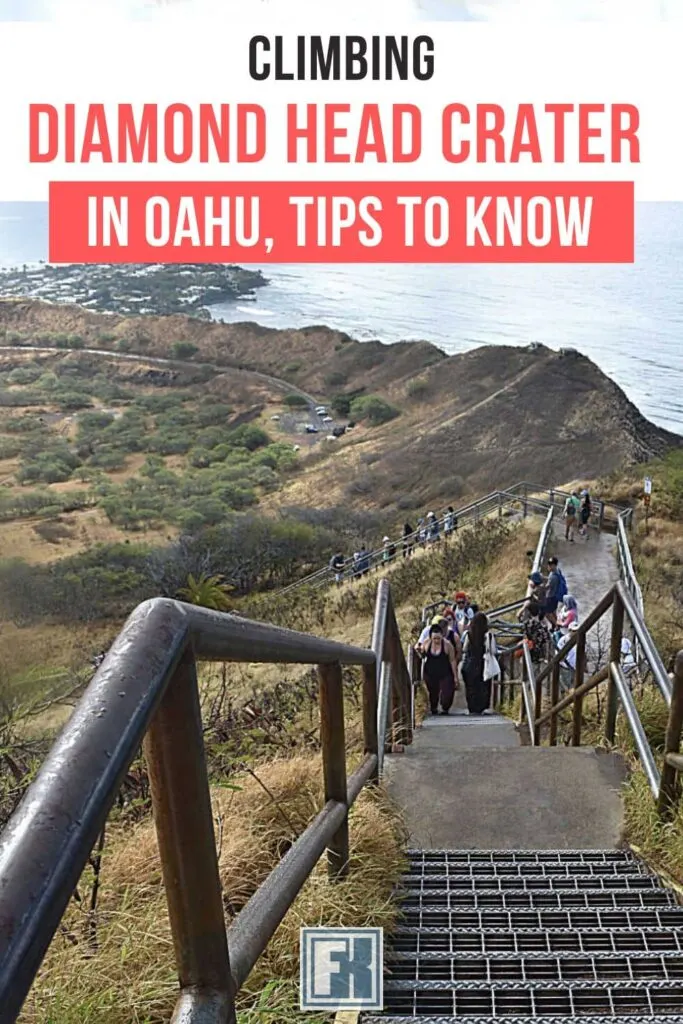
The earliest time is 6 am to 7 am, and the last entrance is 4 pm. Booked visitors are required to arrive within the first 30 minutes of their time slot. If you’re late, you may be denied entry and will not receive a refund.
How To Get To Diamond Head
If you’re arriving by car and staying in downtown Waikiki, drive Kalakaua Ave to the end of the road. It will turn into Monsarrat Ave and then Diamond Head Road. You’ll enter Diamond Head State Park from the east side.
The way is well marked and a short 10 to 15-minute drive from downtown Waikiki. You’ll need to drive through a short vehicle tunnel before arriving at Diamond Head State Monument. Be sure to drive with caution as many pedestrians walk through the narrow tunnel.
Without a vehicle, catch the #2 local bus to Diamond Head from Kuhio Avenue to Diamond Head Rd. The Diamond Head bus stop is outside of the state park.
As a result, you’ll have to walk the rest of the way through the tunnel to the Diamond Head entrance. The walk is about 10 minutes.
If you purchase the Go City (formerly the Go Oahu Card), the pass includes transportation, the entrance fee, a self-guided , and a bottle of water.
If you plan to hike late and watch a sunset, park your vehicle outside the park gate.
Preparing For The Hike
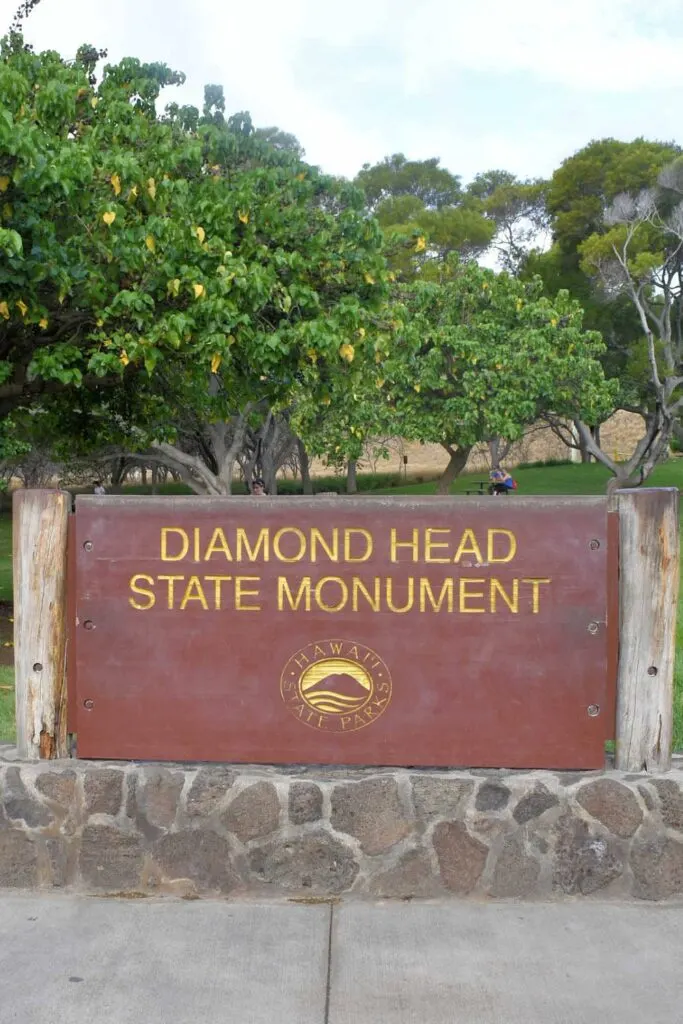
The most important thing to remember is it’s scorching hot in Hawaii, and the hiking trail offers no protection from the sun. So, the best time to hike Diamond Head is early morning.
If you’re spending 7 days on Oahu, check the weather forecast and pick a day when the heat is tolerable.
Since the early morning is the best time to hike, it’s also the busiest time. During peak times, prepare for a crowd and learn to exercise patience.
It’s best to wear a sun hat, sunscreen, and carry both water and a snack. There is a food truck, vending machines, bathrooms, and a fountain to fill your collapsible water bottles at the park’s entrance.
Once on the trail, there are no bathrooms or garbage cans along the way. So, to preserve the environment, carry out whatever you take with you.
You can purchase an audio tour for USD 4 at the Diamond Head visitor center. The audio provides an enriching experience, detailing the plant life, history, culture, and why the locals consider it a sacred place.
I arrived around 8:30 in the morning, and the parking lot was almost full. After reading the crater’s history and checking out the gift shop, Brian and I started our hike to the summit of Diamond Head.
We wore t-shirts, shorts, and a hat and carried water and granola bars. Brian used a cellphone camera, and I brought a DSLR camera.
What To Expect
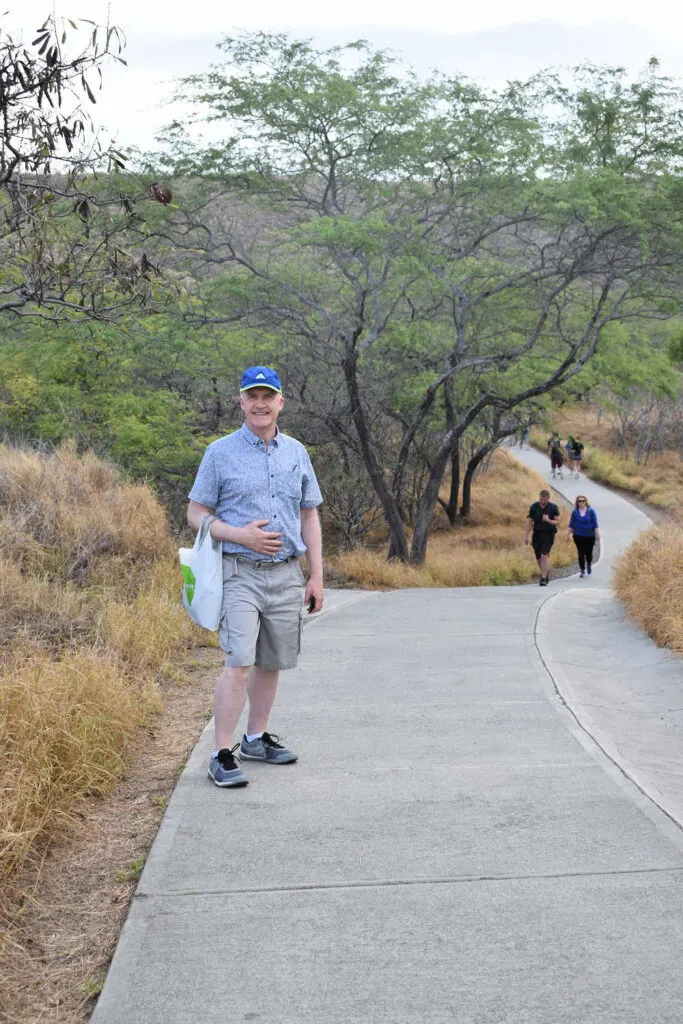
The Diamond Head crater trail started with a cement, flat pathway as we left the parking area. On either side of the walkway, the grass was long, and we enjoyed admiring the vegetation and views of the surrounding crater.
Don’t be deceived by this flat start of the trail because the uphill climb is yet to come. Once we reached the crater rim, the cement path disappeared and was replaced by a dirt pathway.
It’s essential to wear suitable footwear for this hike, as many loose rocks are on the trail. I was surprised at the number of hikers in sandals and flip-flops. Whatever you do, DON’T wear flip-flops.
As I started our climb, the series of switchbacks meandered up the mountain and included some sets of stairs. The path is broad, and a handrail allows for extra support.
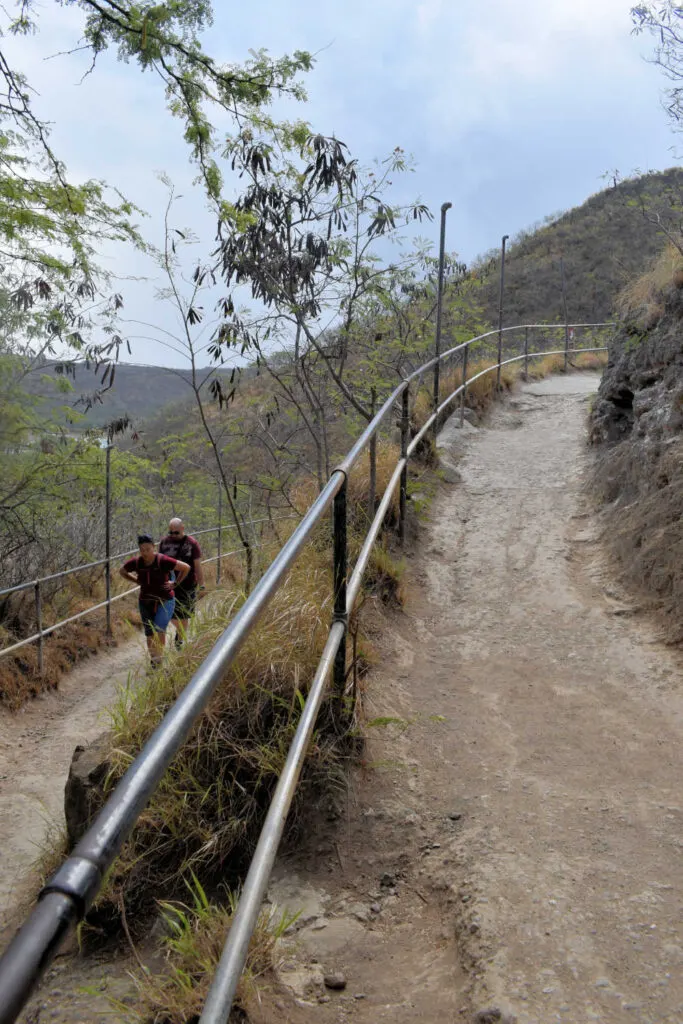
During the climb, I often stopped to admire the views of the crater floor behind me. The size of this iconic crater is quite spectacular, and the scenery of the surrounding area is quite picturesque.
Should you get tired, there are many places to rest and allow other hikers to pass.
Diamond Head Tunnel
As I neared the top of the Diamond Head crater, I reached a narrow 225-foot tunnel. It’s dark and has a low ceiling, so be careful not to bang your head if you’re tall.
Being five feet tall (or short), I could easily walk the tunnel. Being short has its benefits, sometimes!
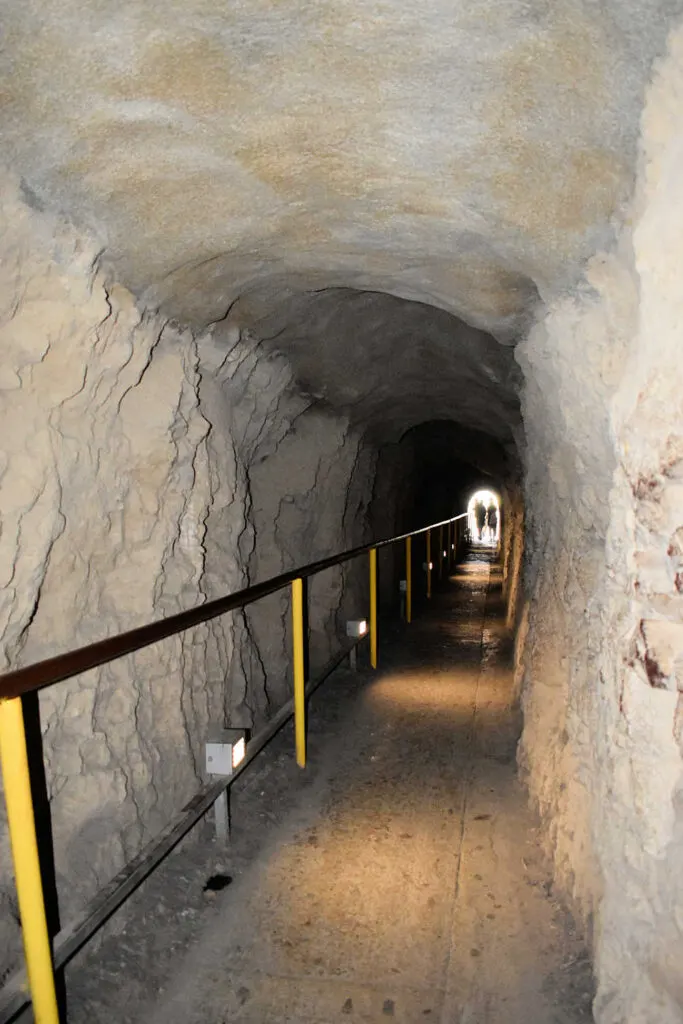
If you’re climbing to the summit to watch the sunset, it’s best to use your cellphone’s light or bring a flashlight to guide you through this dark tunnel once the sun goes down.
On the other side of the tunnel, I reached the Diamond Head staircase, aka the stairs of doom. While the long flight of steep stairs looks ominous, another option exists.
Instead of taking the stairs, turn left to see the World War II bunker, once used as a military lookout. If you’re not into punishment or a Stairmaster junkie, go left! Take my word for it.
While there are more steps, the stairs are broken up into a switchback path and offer resting spots. The stairs of doom consist of 99 stairs steep stairs with no room to rest. The left route also provides a lookout point to enjoy views of the surrounding area.
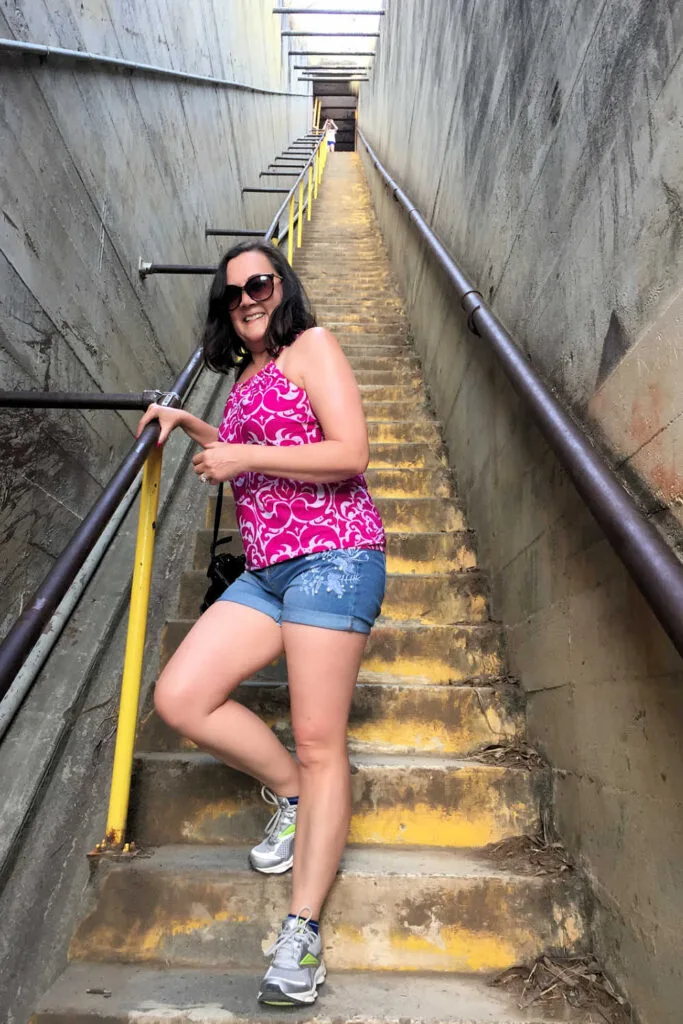
No matter which route you choose, they both loop around and meet each other. So, either way, you complete the circle, either clockwise or anti-clockwise.
Having read some Diamond Head hike reviews, I chose to go left. While the Grouse Grind trail is my local Stairmaster hike, I was on vacation, not at a fitness retreat.
Diamond Head Summit
As I climbed the Diamond Head trail, I savored the spectacular views and took a lot of photos. Near the top, I could appreciate the massive crater’s size and the stunning Waikiki Beach.
It started to rain a little near the top of Diamond Head, and I was unprepared for the weather change. While it wasn’t cold, I did not carry a dry bag for the camera, so I used a plastic bag to keep it dry.
The rain made the rocks slippery, and water quickly puddled on the trail. I now understand the benefits of supporting railings on the dirt trail.
Once I reached the old war bunker, I scrambled inside to stay dry. The doorway into the bunker is small and requires bending down to climb inside.
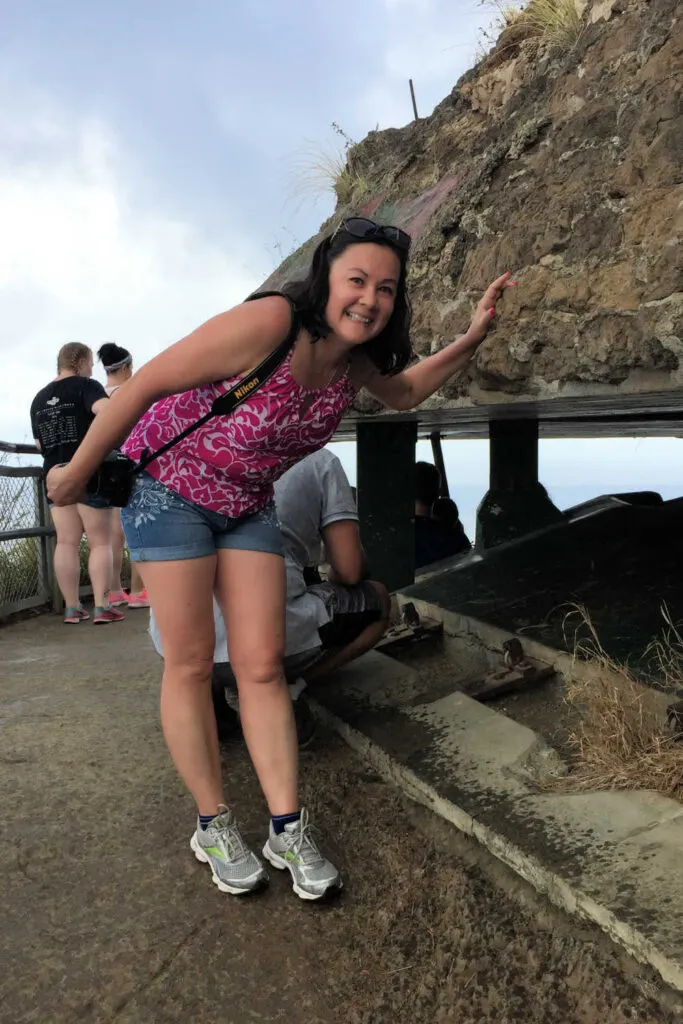
The bunker’s interior is dark and gloomy, and I couldn’t imagine spending hours there during the war. At the back of the shelter is a narrow spiral staircase.
I climbed down, and outside the building, the pathway leads to another set of stairs (54 steps) and the Diamond Head lookout. I could see Koko Head, the Diamond Head Lighthouse, and panoramic views in all directions.
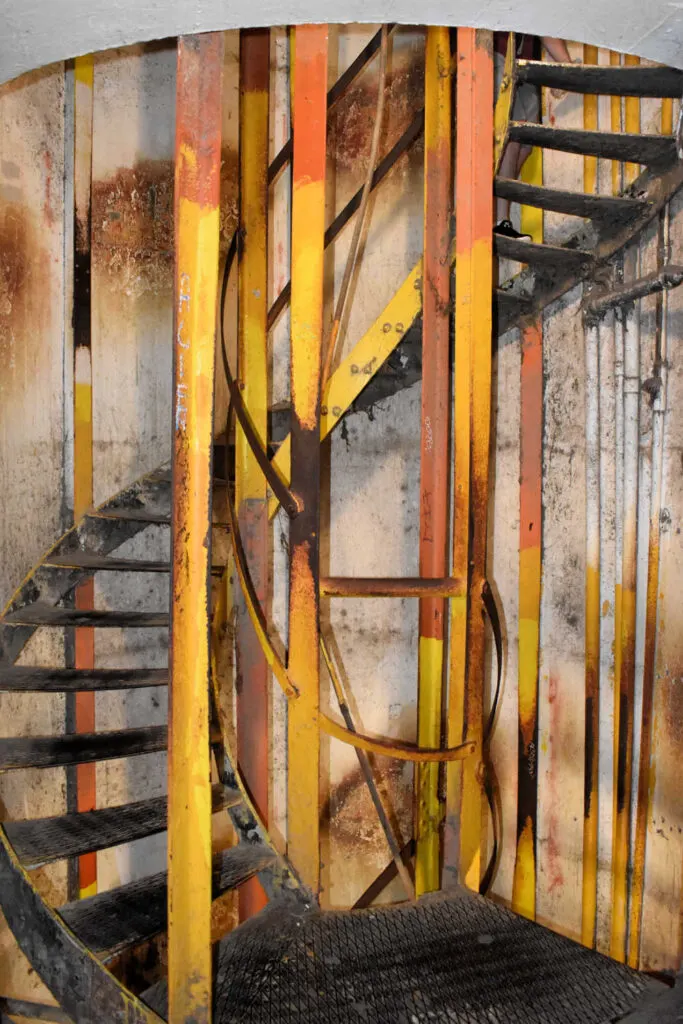
A word of warning: this area attracts a large crowd during busy times and especially in the morning. Be patient and wait your turn to capture your selfies and those gorgeous photos of Waikiki.
Congratulations, you’ve reached the top of this 300,000-year-old cone crater.
Descending The Diamond Head Summit Trail
Since we reached the summit by the left route, we descended by the right path and down the stairs of doom. Walking down was so much easier, and I was thankful we chose not to walk up that way.
The stairs were surprisingly empty as we walked down, and it was a perfect opportunity to capture some shots of these stairs. Now, you’d think the walk down was more straightforward, but not so after the rainfall.
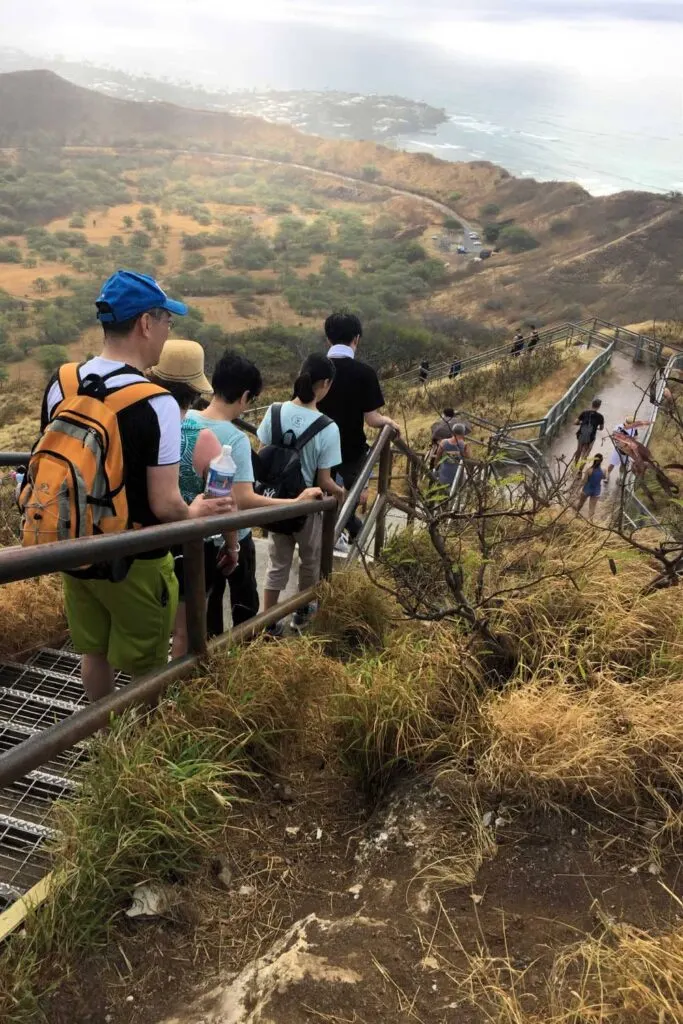
The pathway became very slippery as the smooth rocks were wet. Sometimes, I had to hang onto the handrail to prevent slipping. At this point, I was thankful I wore running shoes with a good grip.
The walk down provided great views of the meandering trail and the saucer-shaped crater. We could see new groups of people beginning the hike. I noted some of them were wearing the dreaded flip-flops.
The hike generally takes 1-1/2 hours round trip. Although we often stopped to photograph our journey, hiking Diamond Head took 1 hour and 10 minutes round trip.
By the time we got back to the Diamond Head trailhead, the temperature had climbed significantly, and I was thankful we had hiked to the summit before the hottest part of the day.
After the hike, stop at the Diamond Head interpretive kiosk. Built by the Division of State Parks, it provides visitors with information about the cultural and natural history of the Diamond Head crater.
Besides, it sells souvenirs, sunscreens, and t-shirts to commemorate your Diamond Head crater hike. Nearby, reward yourself with a delicious pineapple smoothie from the local food truck.
Overall, we enjoyed the hike and the rewarding views from the summit’s edge. If you’re looking for an inexpensive Oahu activity, the Diamond Head hike is an absolute must.
Since Diamond Head takes less than two hours, consider combining the climb with a snorkel at Hanauma Bay.
Alternatively, enjoy the rest of the day at Kualoa Ranch, a 4000-acre private nature reserve and movie set to Jurassic Park.
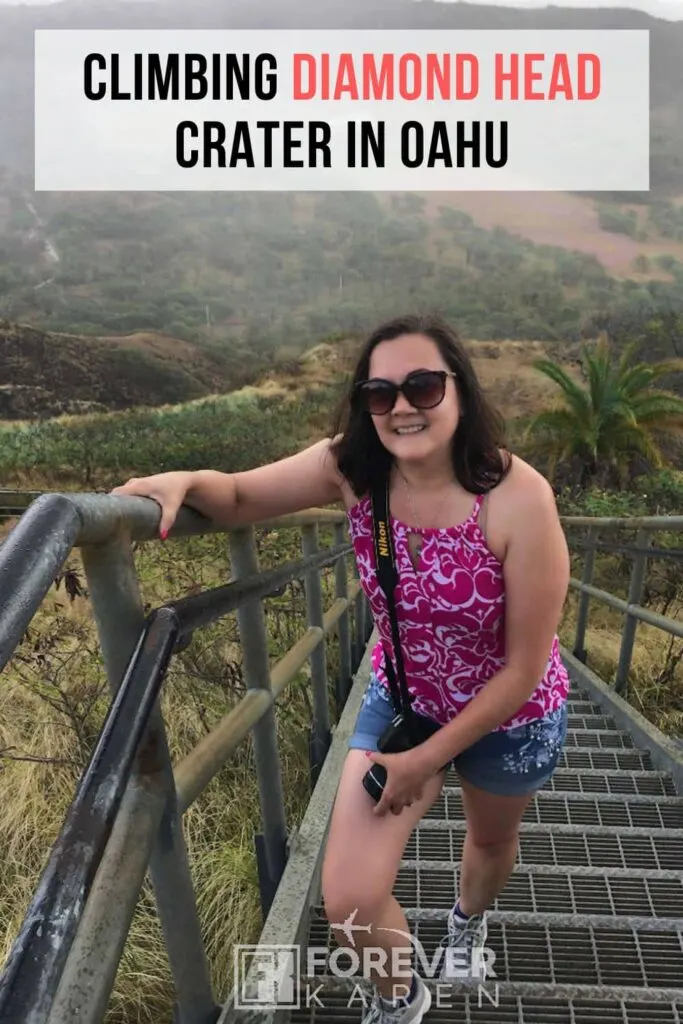

Laurie
Sunday 29th of October 2023
What time of year did you go?
Karen Hosier
Sunday 29th of October 2023
We climbed in April.